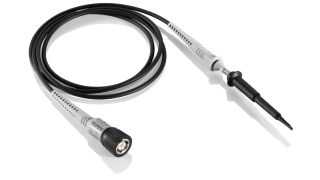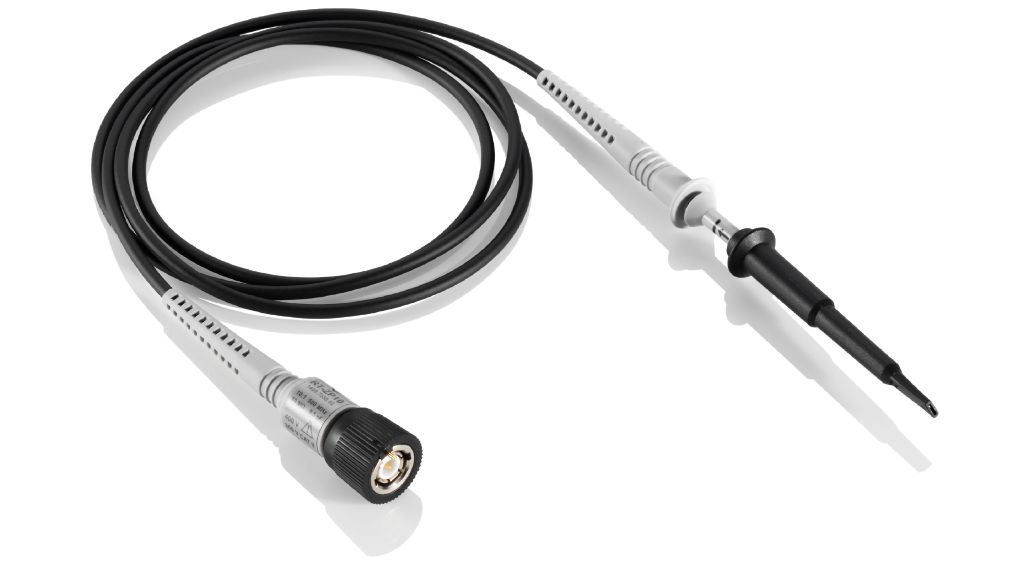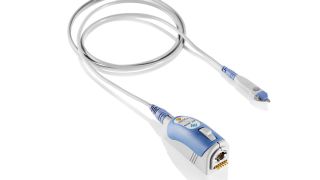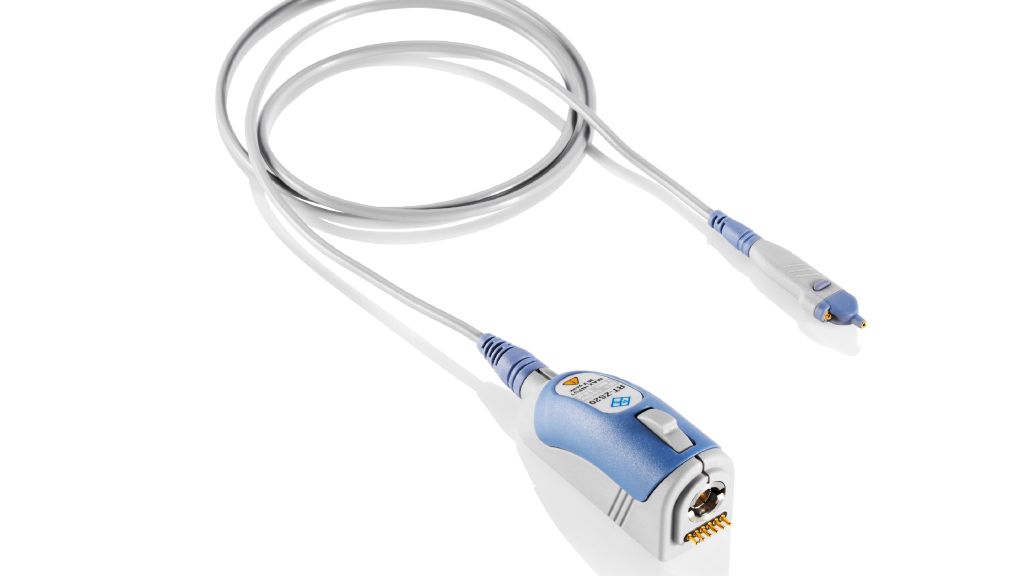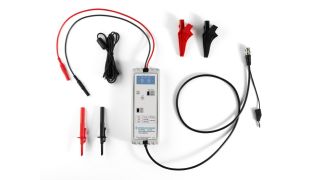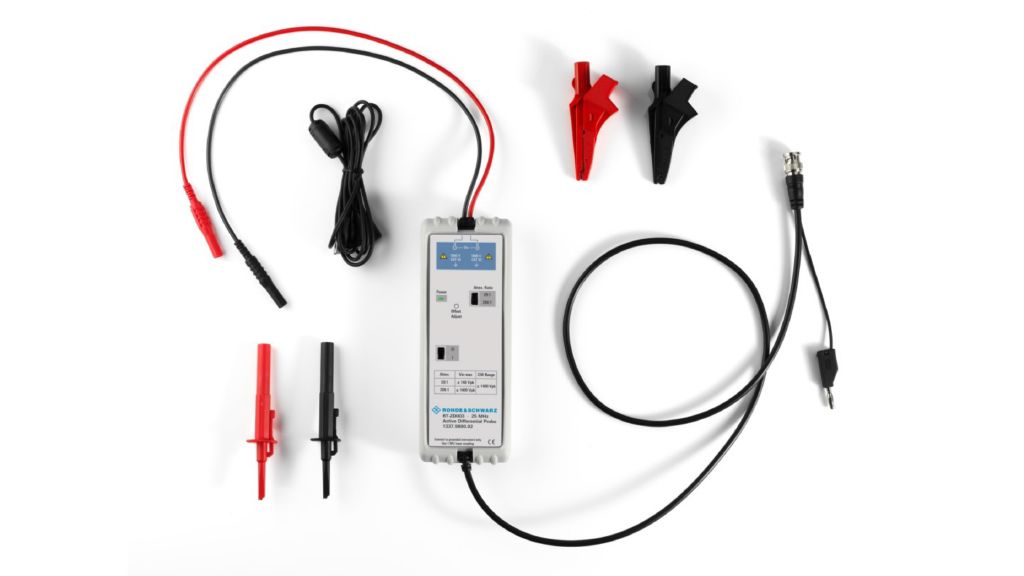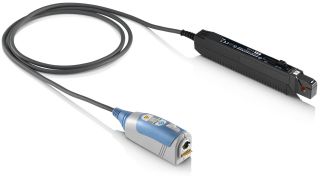Current probes
All the probes we’ve been talking about so far - passive, active and differential - produce a voltage at the oscilloscope input. This is because oscilloscopes measure voltage as a function of time. But what if you want to measure current? Well, you need a way to a way to create a voltage that corresponds to a current in a consistent and predictable way. In other words, you need to “convert” a measured voltage into a current value. For example, 1 V at the scope input could be used to indicate that the measured current is 1 A.
Current probes are a way to achieve this conversion. They work by capturing the electromagnetic field generated by the current flowing through the conductor and converting it into voltage using a known ratio of volts per amp. These probes are positioned or "clamped" around the current-carrying conductor, with an arrow marker indicating the direction of current flow.
Most current probes are active devices, which means that they need an external power source for operation. While all current probes can detect and measure AC, some are also capable of measuring DC currents. AC current measurements rely on a current transformer, while DC or very low frequency AC measurements use a Hall effect sensor.
Normal current probes typically cannot handle large currents. This is where high current probes come in. These probes are characterized by a special structure that allows them to measure high current with low resistance. They often use specialized sensors to measure the magnetic field generated by current flow. This enables non-contact measurement, which is essential when dealing with high currents. Additionally, high current probes usually offer higher accuracy and resolution compared to normal current probes. This is necessary for applications such as power electronics and energy systems, where small changes in current can have significant implications.





